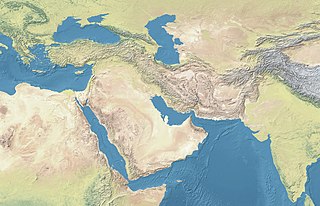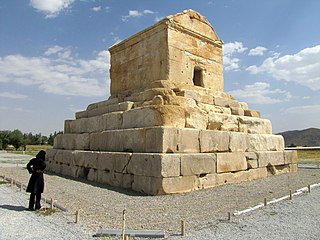Hyrba, a Median city, was one of only a few large Median cities known to exist. Probably built before the beginning of Median accession to power, it was likely a royal city of the kings. Even though it has not been found to this day, it is still considered to have existed. Hyrba appears as a Persian town on the borders of Media in a fragment of Nicolaus of Damascus. [1] Though in Nicolaus's account he comments on its location being in Media, therefore it is still considered a mystery.

The Medes were an ancient Iranian people who spoke the Median language and who inhabited an area known as Media between western and northern Iran. Under the Neo-Assyrian Empire, late 9th to early 7th centuries BC, the region of Media was bounded by the Zagros Mountains to its west, to its south by the Garrin Mountain in Lorestan Province, to its northwest by the Qaflankuh Mountains in Zanjan Province, and to its east by the Dasht-e Kavir desert. Its neighbors were the kingdoms of Gizilbunda and Mannea in the northwest, and Ellipi and Elam in the south.
Nicolaus of Damascus was a Jewish historian and philosopher who lived during the Augustan age of the Roman Empire. His name is derived from that of his birthplace, Damascus. He was born around 64 BC. Nicolaus is known to have had a brother named Ptolemy, who served in the court of Herod as a type of book-keeper or accountant.
Contents
Ongoing research into its exact location has not proven any verifiable results. Historians consider Hyrba like other lost Median cities, which it is impossible to locate unless by the merest conjecture. [2] The first battle known to have taken place there was the first battle between Media and Persia and was fought between Harpagus and Cyrus the Great. According to Ctesias, Cyrus defeated the Median forces near the town of Hyrba (the location of which remains unknown). [3] Therefore it can be said that it was an important city near the frontier towns between Media and Persia, though on which side it is unknown, but likely in the Median province.
Harpagus, also known as Harpagos or Hypargus, was a Median general from the 6th century BC, credited by Herodotus as having put Cyrus the Great on the throne through his defection during the battle of Pasargadae.

Cyrus II of Persia, commonly known as Cyrus the Great, and also called Cyrus the Elder by the Greeks, was the founder of the Achaemenid Empire, the first Persian Empire. Under his rule, the empire embraced all the previous civilized states of the ancient Near East, expanded vastly and eventually conquered most of Western Asia and much of Central Asia. From the Mediterranean Sea and Hellespont in the west to the Indus River in the east, Cyrus the Great created the largest empire the world had yet seen. Under his successors, the empire eventually stretched at its maximum extent from parts of the Balkans and Eastern Europe proper in the west, to the Indus Valley in the east. His regal titles in full were The Great King, King of Persia, King of Anshan, King of Media, King of Babylon, King of Sumer and Akkad, and King of the Four Corners of the World. The Nabonidus Chronicle notes the change in his title from simply "King of Anshan", a city, to "King of Persia". Assyriologist François Vallat wrote that "When Astyages marched against Cyrus, Cyrus is called ‘King of Anshan’, but when Cyrus crosses the Tigris on his way to Lydia, he is ‘King of Persia’. The coup therefore took place between these two events."
The Battle of Hyrba was the first battle between the Persians and Medians, taking place around 552 BC. It was also the first battle after the Persians had revolted. These actions were led by Cyrus the Great, as he shifted the powers of the ancient Middle East. The Persian success in the battle led to the creation of Persia's first empire and began Cyrus's decade long conquest of almost all of the known world. Though the only authority with a detailed account of the battle was Nicolaus of Damascus, other well-known historians such as Herodotus, Ctesias, and Strabo also mention the battle in their own accounts.














